Heading into the turn of the new year, Burton Albion were rock bottom of League One, six points adrift of safety with survival prospects looking very dim. Manager Jake Buxton had just been removed from his position after a run of woeful results, with just two wins in 21 games in England’s third-tier.
On New Year’s Day, the club appointed former Chelsea and Leeds United centre-forward Jimmy Floyd Hasselbaink as their manager in an attempt to rescue what was looking to be yet another disastrous season. This was the Dutchman’s second spell in charge of the Brewers, having gotten them promoted in the 2014/15 season from League Two before leaving for Queens Park Rangers. He was appointed alongside former Stevenage and Oldham Athletic manager Dino Maamria as his assistant.
The pair were in the stands for the first game, as they saw their team get trounced 5-1 by Oxford United at the Pirelli Stadium, but in their nine games in the dugout, Burton have won seven of those, including some very impressive wins against Hull City and most recently table leaders Peterborough United, pushing them off the bottom and rocketing them now to 18th in the league table and fighting for a mid-table finish, an excellent turnaround of results in such a short space of time.
This article will be a tactical analysis of Burton Albion in the form of a scout report. It will be an analysis of the effective tactics that have been put into place since the arrival of Hasselbaink and Maamria at the start of the year and how they have completely revitalised the squad. It must be noted that this article was written prior to Burton’s game on Tuesday night away at AFC Wimbledon and so the statistics used throughout may have changed slighty.
Formation and personnel
From a system point, Burton Hasselbaink did not make too many radical changes. Prior to his appointment, Buxton was predominantly using a 4-2-3-1 formation as well which is still widely used under the Dutch coach apart from one game against Charlton Athletic and Gillingham where a 4-1-4-1 was deployed.
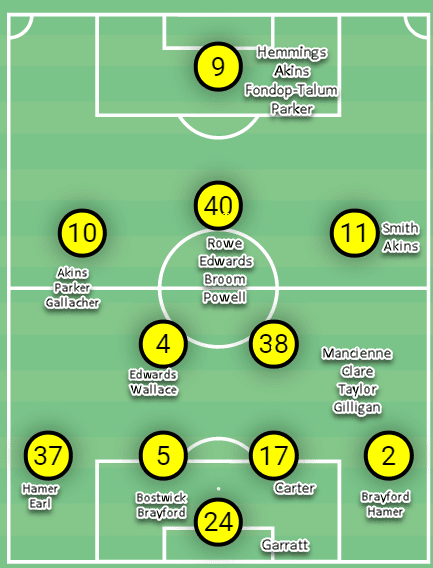
The visual representation above shows the starting lineup from Burton Albion’s most recent match, a 2-1 win over Peterborough. The players on top of each list are the ones who started against The Posh in the 4-2-3-1 formation, whilst the rest are players who have mainly played in each position during Hasselbaink’s reign, in no particular order.
Before getting into tactical tweaks by the manager and his assistant Maamria, the club’s winter recruitment must be looked at as a huge reason behind Burton Albion’s success since the turn of the year.
The new coaches have had a much better squad of players to work with than was previously available prior to the opening of the winter transfer window. Centre-back Sam Hughes was making a good impression at the Pirelli Stadium, on loan from Leicester City, before he tore his cruciate ligament.
The team needed a new centre-back and so managed to bring Hayden Carter in on loan from Blackburn Rovers in January to replace him. The Englishman has been a revelation since joining the club, playing every game so far for the Brewers, in which the team have kept five clean sheets.
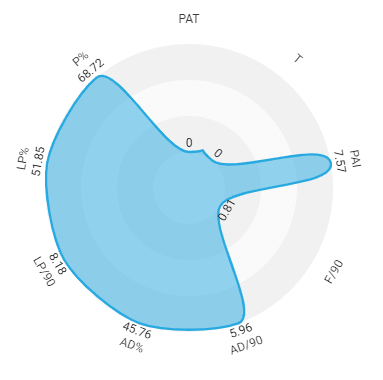
Burton play a very direct style and Carter plays 8.18 long passes on average per 90 (LP/90), with a success rate of 51.85 percent (LP%), as well as having a passing accuracy of 68.72 percent in total (P%) in the league. He also gives away very few fouls per 90 too with just 0.81 (F/90). Carter has yet to make a sliding tackle (T) surprisingly but has an interceptions per 30 opposition possessions (PAI) of 7.38, which is a decent number.
Sean Clare, Josh Earl, and Ryan Broom were also signed on loan, all of which have played a big part in the club’s recent success, particularly Clare who typically starts in a double-pivot with Ryan Edwards.
Josh Parker and Mike Fondop-Talum were signed for free from their respective clubs, whilst Michael Mancienne and Danny Rowe were signed as free agents. This came to a total of £0 in transfer fees despite each player playing a massive role in the team over the past two months, some very astute business by the club.
Defensive shape and stopping crosses into the box using wingers
As stated on numerous occasions, Burton use a 4-2-3-1 for the most part and maintain a good defensive structure throughout. When they press and defend in a high block or a mid-block, the shape resembles a 4-4-2 with the number ten being tasked to push up next to the centre-forward and create a two-man first line of pressure, pressing the opposition’s centre-backs while also applying a cover shadow to the pivot behind them.
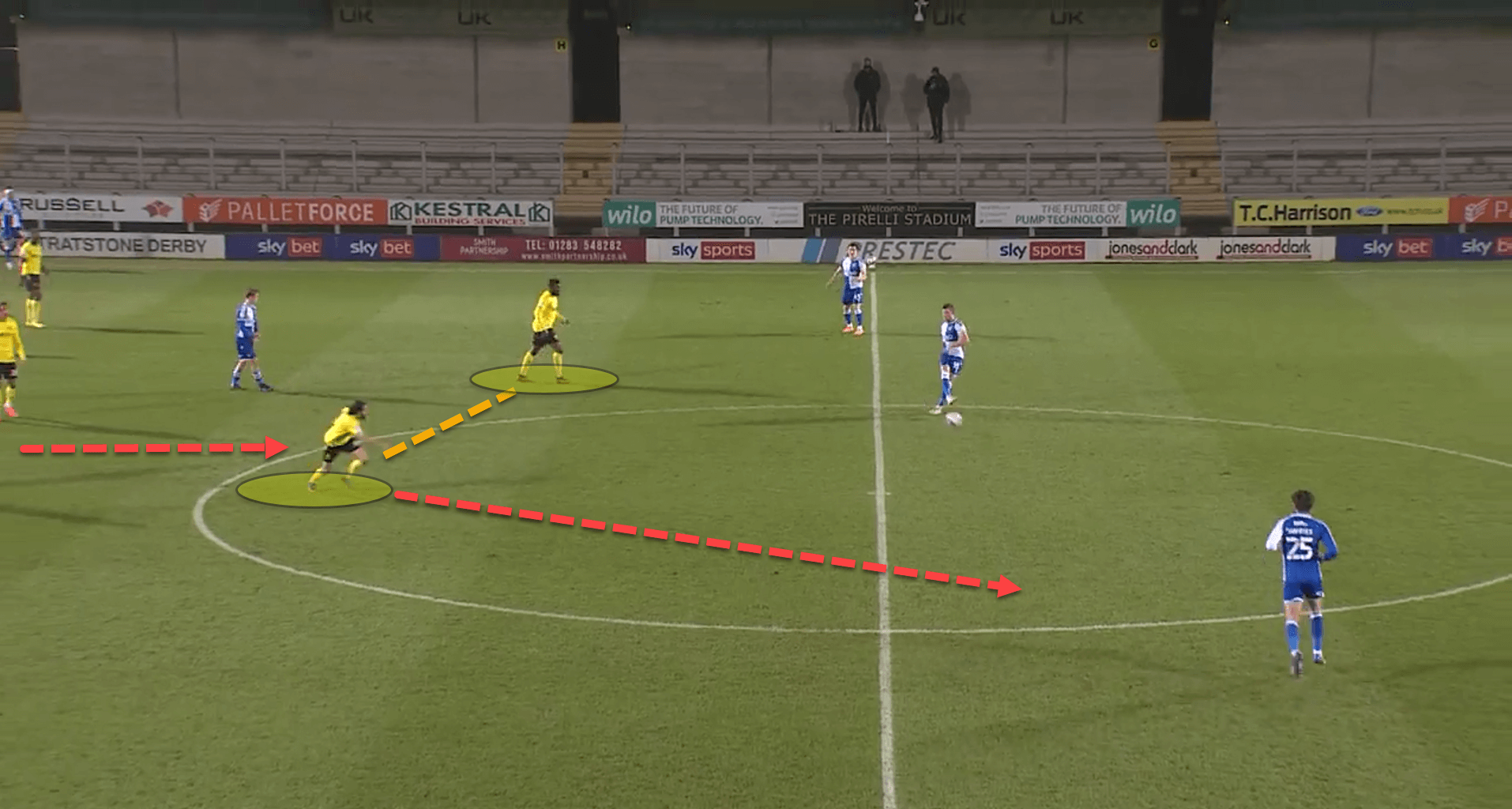
Here is an example of Ryan Edwards who played as a number ten in Burton’s recent game against Bristol Rovers. When Burton were in their defensive shape, he would push up and create a two-man frontline to press the Bristol centre-backs. Hasselbaink utilises Edwards in certain games as a number 10 as, despite him not being a naturally gifted player, his energy levels to press from the front are one of the best in the team.
When Burton are pinned back into a low-block, they defend in more of a 4-4-1-1 shape rather than a 4-4-2. This is because the attacking midfielder drops back to defend in front of the two holding midfielders whilst the centre-forward stays high on the opponent’s backline to act as the out-ball.
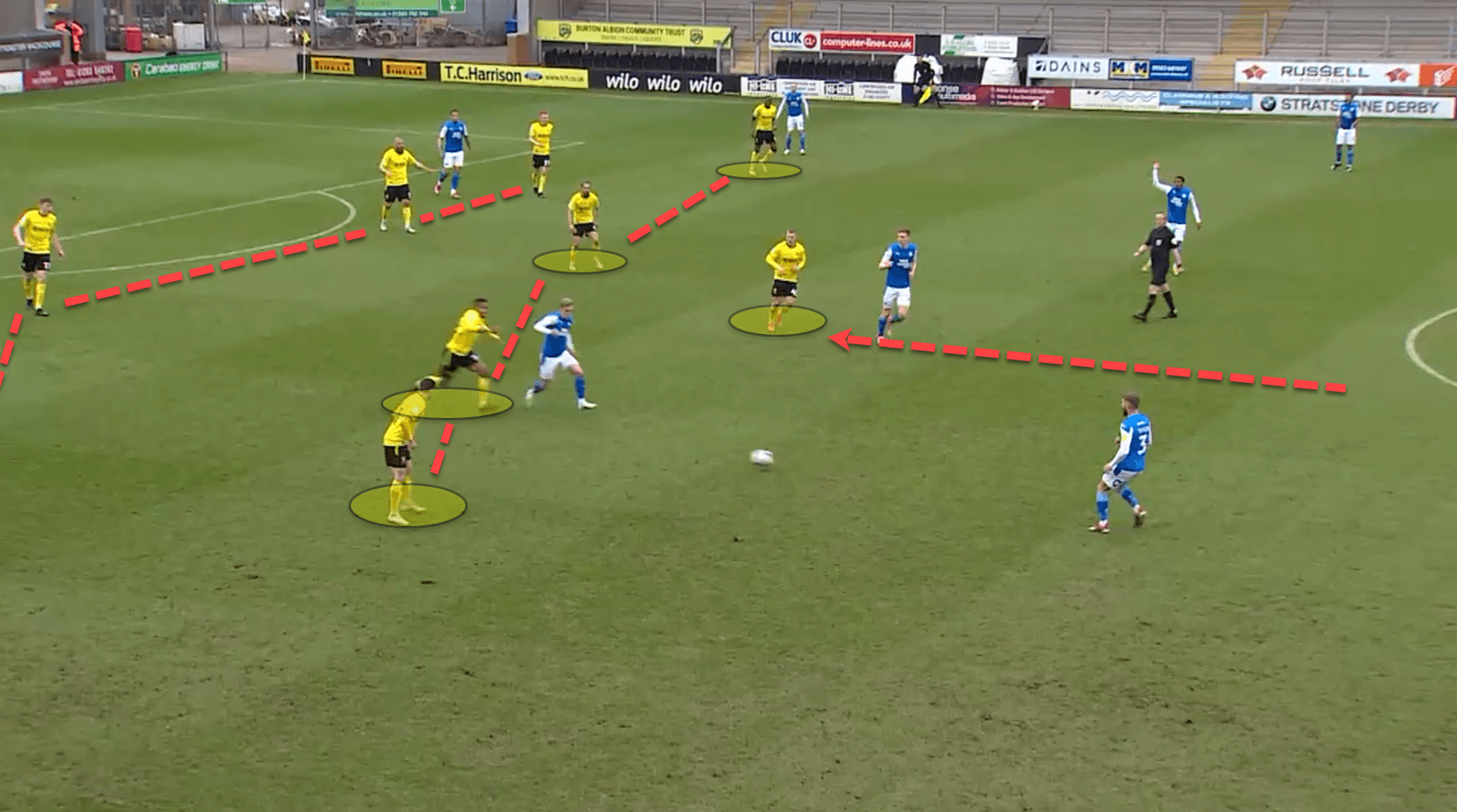
In this example from their most recent game against Peterborough, Rowe has dropped back to defend the area in front of the two holding midfield players, Mancienne and Edwards. By doing so, it means that the two midfielders will not have to come out too far to close down opposition ball players, which in turn would leave space in behind them to be exploited as defensively, one of the main principles under Hasselbaink was to stay compact between the lines, particularly the midfield and backline, and force the opposition out wide.
Speaking to @Rob_BAFC on Twitter – a fantastic account dedicated to analysing Burton Albion and their upcoming opposition – he told me that one of the key problem areas for Burton in the first half of the season before the new manager’s arrival was their shockingly poor ability to defend crosses into the box, and then subsequently clear the ball. A huge chunk of their goals prior to the appointment of Hasselbaink and Maamria were from crosses into the penalty area.
Under the new management, this is something that has been rectified quite a lot using a slight tactical tweak. When defending in the wide areas, the ball-near winger for Burton is tasked with tracking the fullback and dropping into the backline to defend the cross.

In this example, Akins has had to track back to stop the fullback from advancing on the right defensive flank. This is so that the Burton fullback can stay in close proximity to the nearest centre-back, instead of having to push out to defend the cross. It also means that the ball-near holding midfielder can stay centrally to protect the space in front of the centre-backs rather than having to move out wide and stop the cross.
The wingers must be very hard-working and focused throughout so as to not leave the backline exposed to balls into the box. The four defenders can then stay compact and pack the box with the two defensive midfielders and clear the cross should it make its way past the defending winger on the flank.
The winger tracking back is not guaranteed to stop the cross, but it means that by essentially creating a temporary back five, the player on the ball is forced to cross from further out than normal, meaning there is much less of a chance for a quality ball into the box.
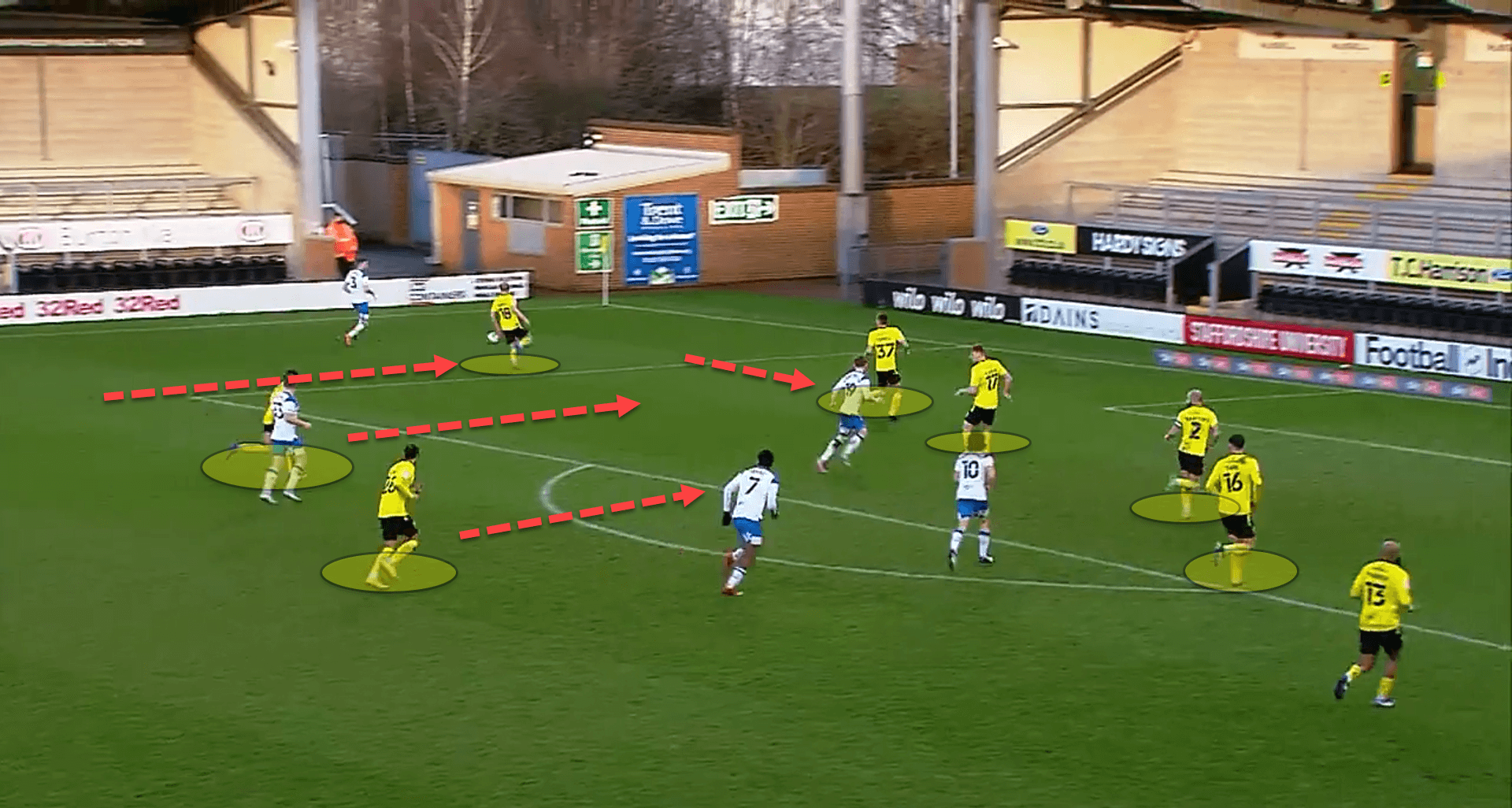
Prior to the new manager being brought in, Burton had conceded 45 goals in the league, one of the worst defensive records. Since his first game in the dugout alongside Maamria, Burton have now only conceded 6. Hasselbaink and his staff have clearly managed to rectify the defensive mistakes which had placed them so low on the table.
Direct play
As stated already, Burton are a very direct team in terms of their attacking play. Technically speaking, they do not have the most talented ball possession players at the club, and so Hasselbaink and Maamria must make the most of the players at their disposal by playing football which may not be the easiest on the eye.
Since their first game in the dugout against Gillingham, Burton have averaged 60.22 long passes per 90 in League One – one of the highest in the league at the moment – completing 31.33 on average which is a success rate of 52.39 percent.
When the Brewers have the ball with the backline in a positional attack, or else the goalkeeper, the main objective is to get the ball forward as quickly as possible into the final third where they can use numerical superiority to try and win the second ball from a knock-down or a flick-on.
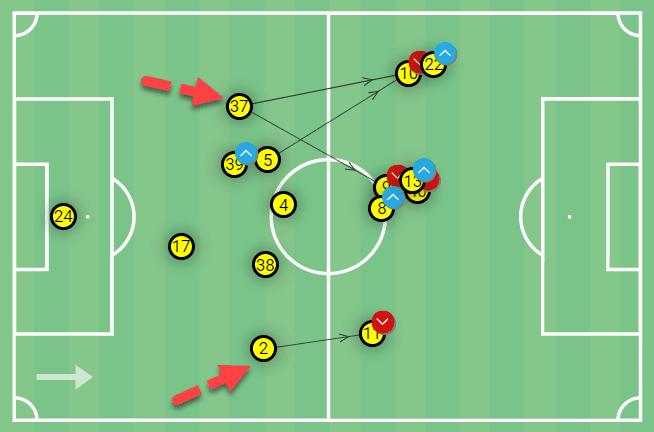
This ball progression is generally done by the backline, skipping the midfield completely and just playing long to the final third. As we can see from the data representation above, which shows Burton’s most used progressive passing links from their most recent game against Peterborough.
The most used links, as we can see, were from both fullbacks to both wingers, and the left centre-back, Bostwick, to the left-winger. Burton usually only use physical centre-forwards up top, so the lone striker is also another widely used passing option when playing long from the backline. When the ball is played long to the wingers or the centre-forward, the objective is of course to win the second ball.
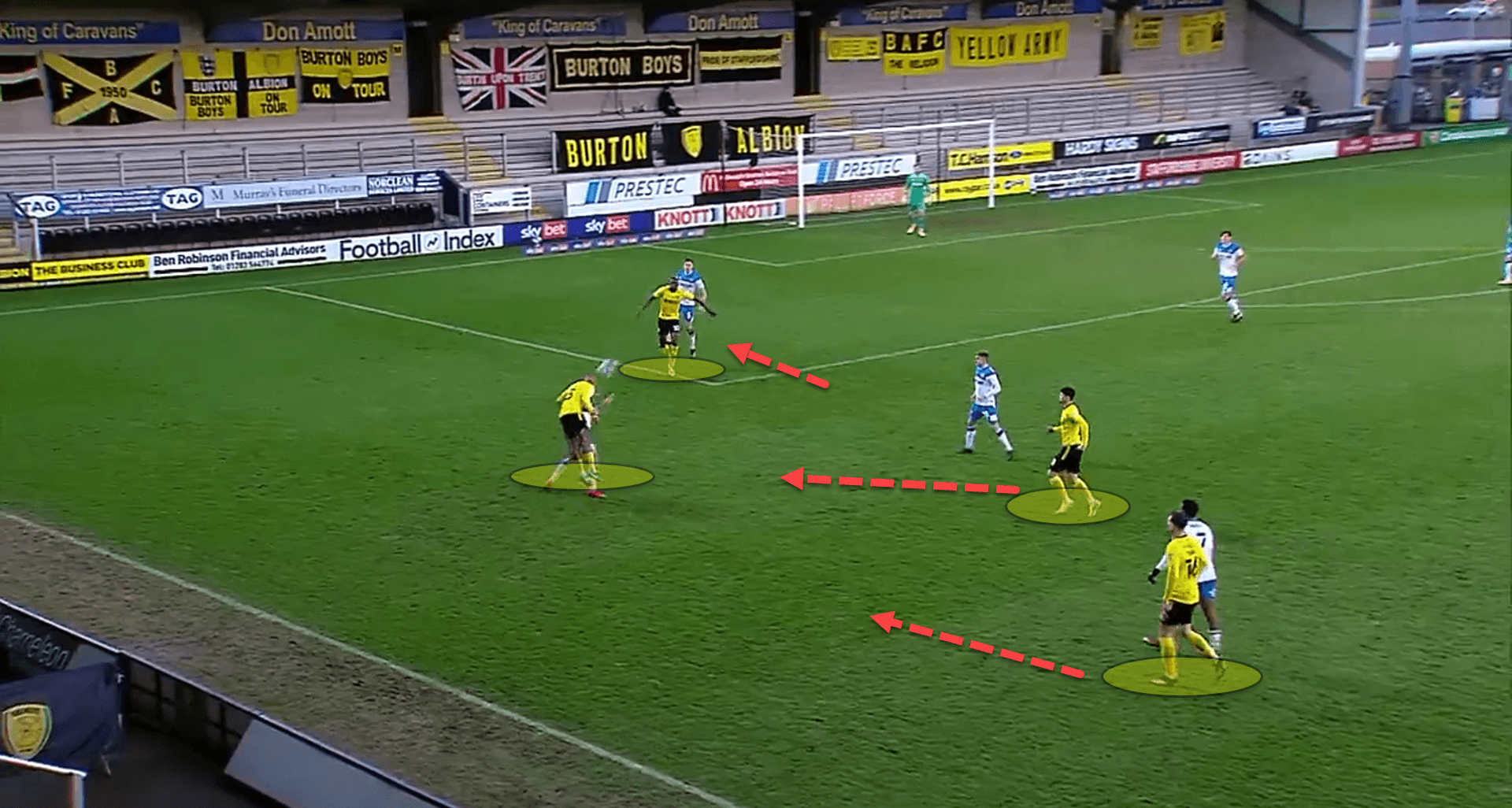
In the wide areas, this is easier as they can box the opponent into a tighter area and win the second ball. When the attacker challenges for the header, Burton generally use at least one runner in behind in case of a flick on and two supporting in front, which is a huge benefit of the 4-2-3-1 formation, although this may slightly change depending on the situation.
If they win the second ball successfully in the final third, as they are very capable of doing when they press the ball aggressively, Burton look to play to their wingers or fullbacks in order to get crosses into the box.
Since Hasselbaink and Maamria’s arrival, Burton have had a total of 81 aerial challenges in nine games, 18 more than they had in the previous nine before their appointment. They win 47 percent of these aerial duels, which are vital to their direct attacking play.
When they look to get balls into the box, winger Jonny Smith is vital to their attacking play. The wide man has played an average of 2.9 crosses into the box in his seven games for the club, the most under Hasselbaink for those who have played more than one appearance. He has also provided one assist and bagged himself two goals for the Brewers.
When in possession, they look to get the 23-year-old on the ball on the right-hand side due to his excellent crossing capabilities and his ability to take players on. Smith’s preferred move is to cut inside onto his preferred left foot on the right flank before delivering an inswinging ball into the box towards one of Burton’s physically-gifted centre-forwards.
Burton always look for him in the final third to create chances, by trying to get him into positions where can go at defenders 1v1. In League One alone this season, Smith averages 7.07 dribbles per 90 with a solid success rate of 59 percent.
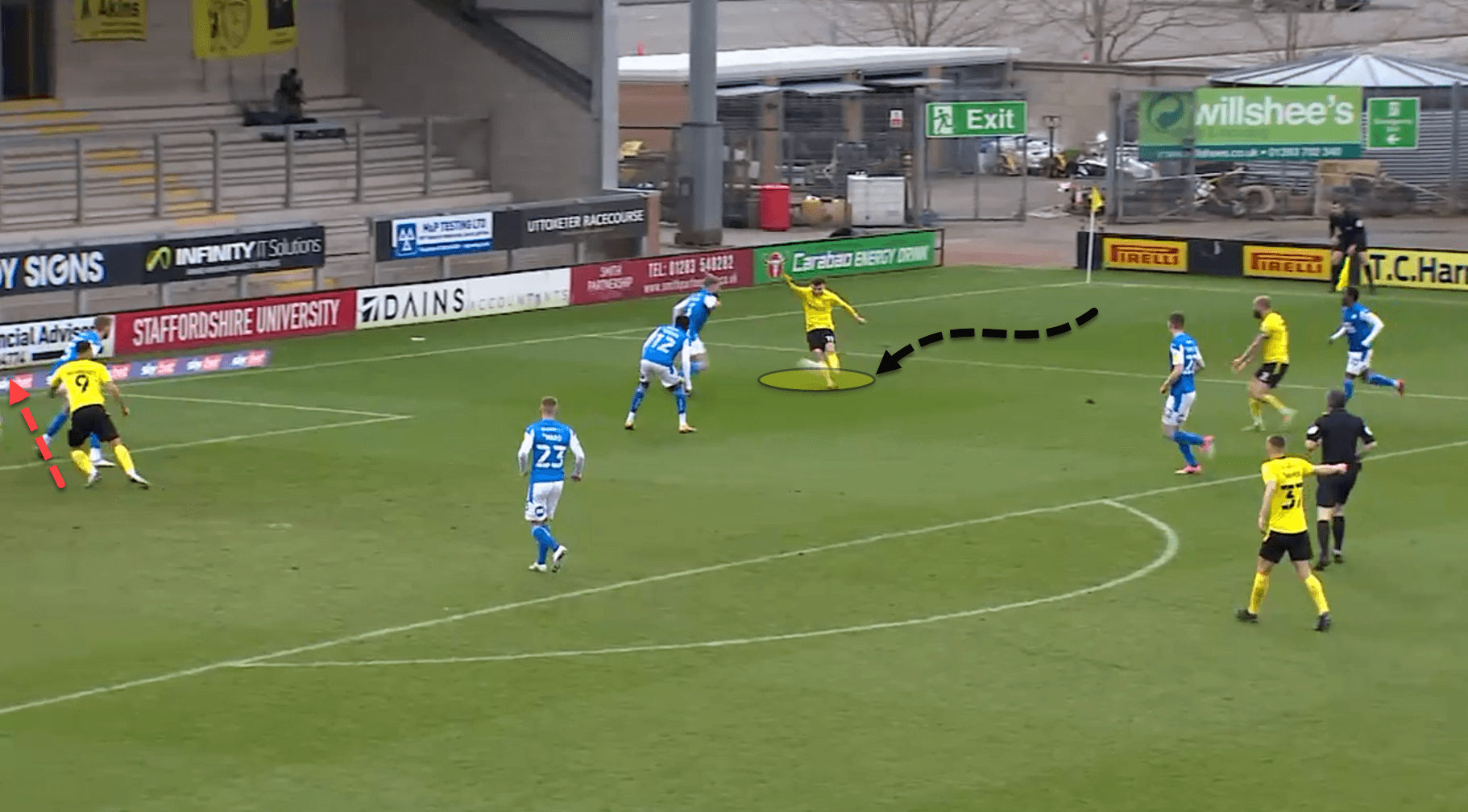
Here, Burton managed to get him in a perfect 1v1 position with a defender. Smith used his quick feet to cut back on his favoured left foot and drill a low cross/shot, which fumbled over the line in the end by Kane Hemmings. Again, in the following image, we can see the type of situation that Burton look to get their star winger into.
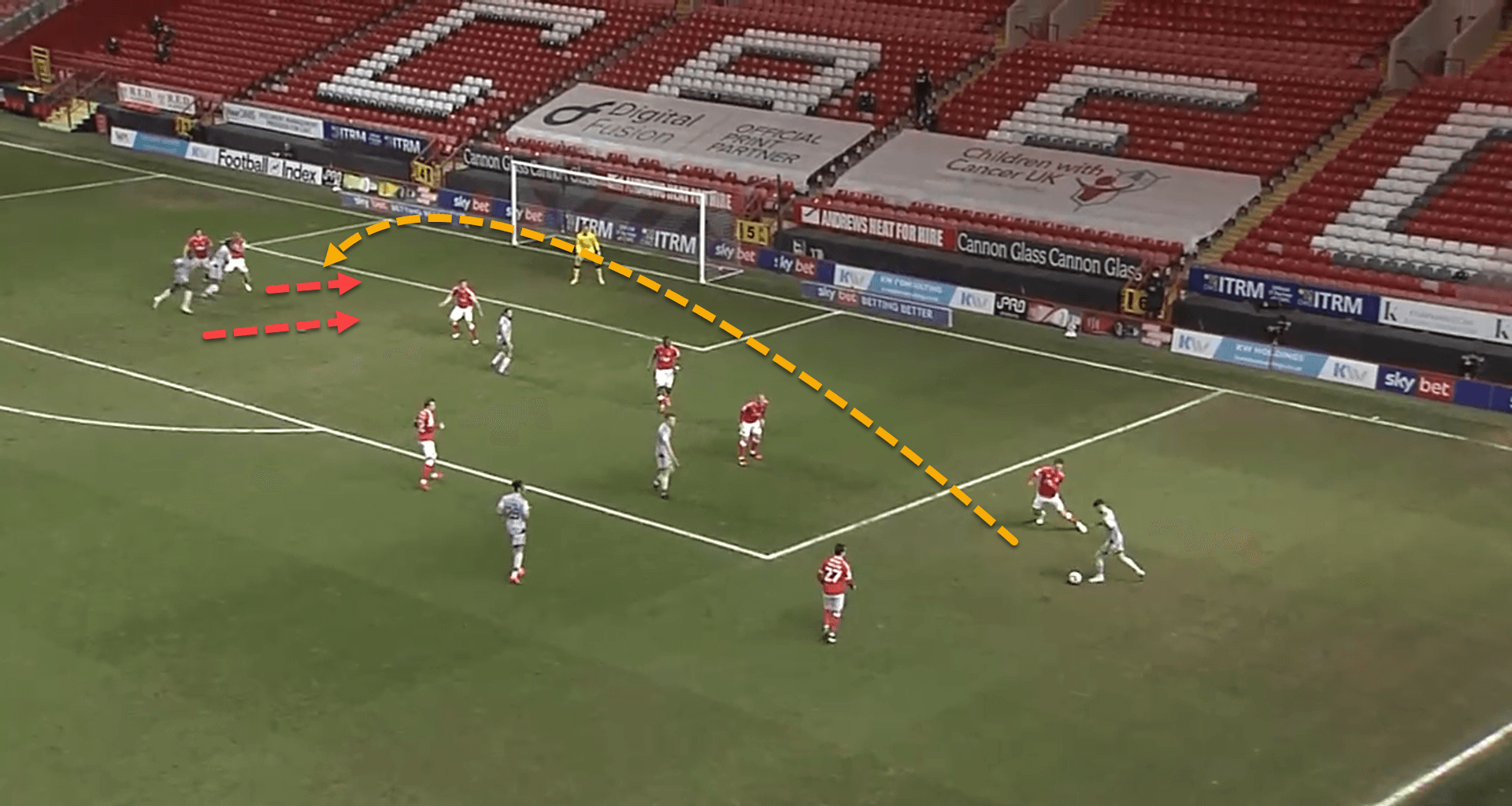
The attack above was defended by the fullback but his footwork to get into this excellent crossing position makes him a very dangerous player.
He still has quite a lot of development needed in his game but there is no doubting his importance to the Brewers. Perhaps with a more potent front-line, Smith would have a much higher assistant tally.
Nullifying Burton’s attack
As already stated, wing play is extremely important to Burton’s attacking threat. If teams can nullify this, they struggle to create chances. In a recent game against Sunderland, a 3-0 loss at home, the visitors managed to nullify Burton’s threat out wide, even prior to the red card, and Hasselbaink’s team finished the game without a goal for only the second time during his reign.
Lee Johnson’s side did so by using numerical superiority in the wide areas to ensure that they always had an extra man against Burton, helped by their deployment of a 5-4-1 formation out of possession.
The Brewers generally attack using combination play between a winger and an overlapping fullback so Sunderland would often shift their wingback, winger, and ball-near centre-back across to create a 3v2 situation on the flanks, which made it extremely difficult for Burton to find room to cross.
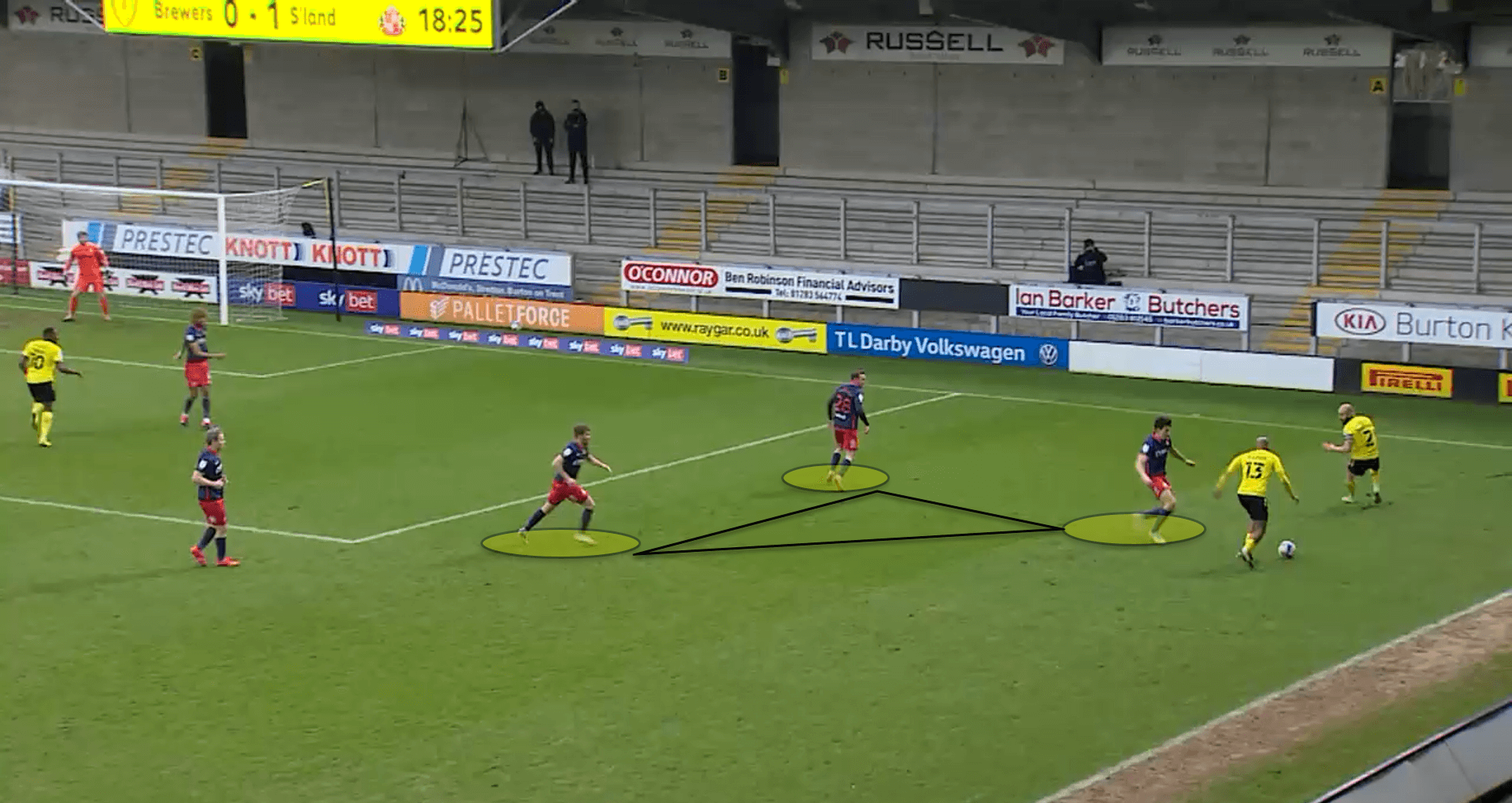
Conclusion
There are many more tactical details that I could have written about in this article, but I could not quite find room to fit everything in. Burton have been extremely impressive since Hasselbaink and Maamria took over two months ago and they show no sign of slowing down as of yet.
The new coaches have not made radical changes, but the changes made have been very effective and Burton have been far more compact and sounder in defence. The new players have helped with the upturn in results of course but there is no doubt that they are under the right leadership at the moment, and hopefully, with the correct signings in the upcoming summer transfer window, they can get back challenging for promotion to the Championship.






Comments